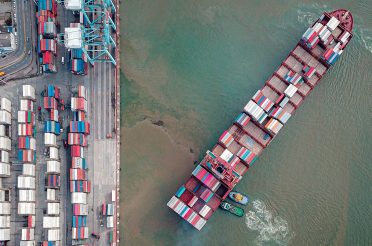China VIE Structure 2020
Feb 24, 2020 | Fred Greguras
This article updates a November 2016 article: “The China VIE Structure is Vulnerable-So Why is it Still Used?” The impact of the PRC Foreign Investment Law that went into effect on January 1, 2020 and other recent developments relevant to the VIE structure are discussed.
The accounting definition of “variable interest entity” (VIE) is an entity in which an investor holds a controlling interest based on contractual arrangements and not based on owning the majority of voting rights. To non-accountants, the VIE structure is a business structure that is widely used in certain business sectors in China that have prohibitions or restrictions on foreign investment under the 2019 Negative List such as telecommunications, e-commerce, education, and media. The VIE structure is currently the only way that foreigners may have an economic interest in such businesses.
The VIE structure is also used by other types of Chinese businesses seeking foreign financing and a possible exit on an offshore equities exchange such as Nasdaq or the NYSE. The China capital exchange controls would result in illiquid shares for foreign venture capitalists and other investors in an IPO exit in China.
Of the 11 Chinese IPOs in the US in the 3 months ending January 31, 2020, 6 were structured as VIEs because of the China foreign investment restrictions, 2 were structured as VIEs for other reasons; i.e., to facilitate financing by foreign investors and liquidity in an exit, and 3 of the companies were not VIEs. All 11 of the companies were incorporated in the Cayman Islands.
PRC Foreign Investment Law
The PRC Foreign Investment Law was passed by the National People’s Congress on March 15, 2019, and went into effect on January 1, 2020 (FIL). The legislation was initially circulated for public consultation in January 2015 (“2015 Draft”). The 42-provision FIL differs significantly from the more detailed 170-provision 2015 Draft. Some of the provisions in the FIL have been designed to reduce trade tensions with the United States.
The FIL contains general principles to consolidate the various laws and regulations on foreign investment in China, to promote and provide more equal treatment for foreign investment in China, to protect foreign investors by enhancing protections for intellectual property rights (IPR), to establish a national security review system and other provisions. Many provisions will need to be clarified and interpreted in the future by supporting laws, administrative regulations or actions of the State Council.
Definition of Foreign Investment
Article 2 defines foreign investment as investment activities, directly or indirectly, by foreign individuals, corporations, or other organizations in China, including the establishment of foreign-invested enterprises (“FIEs“), acquisition of shares, equity, assets and other similar interests in China enterprises, investment in new projects in China independently or jointly with other investors, and other forms of foreign investment as specified in laws, regulations or by the State Council. M&A is included in the scope of foreign investment. An FIE is an enterprise incorporated under Chinese laws within China with all or part of its investment from a foreign investor. Article 2 doesn’t define what constitutes an ‘indirect investment’.
The definition of foreign investment does not include the “de facto controller” concept which was in the 2015 Draft. Under this approach, any Chinese entity effectively controlled by a foreign-owned entity would be treated as a foreign entity rather than its location of incorporation or domicile. Without this deletion, a Chinese domestic company controlled by non-Chinese persons or entities in the VIE structure would have been a foreign investment subject to the Negative List. The use of the term “indirectly” and the broadness of “other forms of foreign investment as specified in laws, regulations or by the State Council” provide a basis for Chinese regulators to take action on VIEs in the future.
Negative List
The Negative List specifies administrative requirements for foreign investment access to certain business sectors. Foreign investors may not invest in any sector prohibited for foreign investment by the Negative List. Foreign investors must meet the requirements in the Negative list for any sector restricted by the Negative List. Foreign investors will have national treatment consistent with domestic investment for sectors not included in the Negative List. Importantly, Article 4 and Article 28 clarify that the Negative List will be released by or with the approval of the State Council. It is a central government decision. Neither ministries nor local governments may specify restrictions on foreign investment. The most recent version of the Negative List was issued on June 30, 2019. The 40-item restricted/prohibited industry list was much shorter than previous versions but did not ease the restrictions in any material way.
National Security Review
Article 35 of the FIL states that foreign investment which harms or could harm national security is subject to a national security review and that a decision following such review is final and may not be reviewed again or appealed. China’s current national security review system (“NSRS”) has been implemented over time since 2011. The NSRS is primarily limited to M&A by foreign investment. The review system implemented under the FIL will likely apply to all foreign investments as defined in Article 2. It is not known if national security reviews will be expanded to sectors other than those currently specified. There have been few published cases and no implementing regulations or interpretations issued for the NSRS which will make it difficult in the short term to predict outcomes. Many details need to be provided in supporting laws, regulations or by the State Council. The National Development and Reform Commission will have the responsibility for national security review of foreign investments.
Promotion of and National Treatment for Foreign Investment
The FIL has several broad provisions for promoting foreign investment by creating a more equal (national treatment) legal framework for foreign investors and to promote and protect foreign investment. Until implementing regulations are issued, however, since the FIL contains broad and sometimes vague provisions, and repeals the existing legal framework for FIEs, there may be more confusion for foreign investors. As of January 1, 2020, the FIL replaced and repealed the existing PRC Foreign Invested Enterprise Law, PRC Sino-Foreign Equity Joint Venture Law and PRC Sino-Foreign Cooperative Joint Venture Law (collectively, “FIE Laws”). Existing FIEs have a five-year transitional period to come into compliance with the PRC Company Law and the PRC Partnership Enterprise Law like their domestic counterparts.
Protections for Foreign Investment
Article 22 of the FIL addresses the protection of IPR of foreign investors and FIEs. It encourages technology collaboration between foreign investors and their Chinese counterparts on a fair and voluntary basis, and bars government officials from using administrative measures to force technology transfers. Article 23 of the FIL establishes obligations on administrative or other government officers not to disclose foreign investors’ and FIEs’ trade secrets to any third party. These two articles are intended to protect foreign investors and FIEs from government interference. These provisions may mitigate some of the political pressure China is currently facing to protect foreign IPR. Since the FIL only prohibits the use of administrative means, there are still concerns that other methods could be used to force the transfer of technology. For example, it is unclear whether any changes will be made to the 2001 Management Regulations on Technology Import-Export which specifies that a Chinese licensee of foreign technology owns any improvements it develops and prohibit a foreign licensor from restricting the licensee’s use such of improvements. Articles 22 and 23 could reduce forced technology transfers in JVs and cause faster government action to amend the patent and other IPR laws.
Typical VIE Structure
The simplest VIE structure includes a foreign holding company which is often an exempt limited company in the Cayman Islands, a China wholly foreign-owned enterprise (WFOE) and a China domestic company owned only by Chinese nationals. As indicated above, all of the 11 Chinese IPOs in the US in the 3 months ending January 31, 2020 were incorporated in the Cayman Islands. The founders, foreign investors, and other shareholders hold equity in the Caymans holding company, which in turn owns a 100% equity interest in the WFOE. The Chinese domestic company obtains the license to operate in the prohibited or restricted industry in China. The WFOE exercises de facto control over the domestic company through a series of contractual arrangements entered between the WFOE and the domestic company. The financial statements of the Cayman holding company are consolidated with the WFOE and VIE which makes the holding company financeable. The SEC filings for recent IPOs contain the current state-of-the-art set of control agreements.
The Importance of Ownership of the Chinese Domestic Company
Ownership of the domestic operating company is very important since a contract which avoids the requirements of Chinese law is void and the court will not enforce it. Almost all investor issues relating to VIEs have been when the shareholders of the domestic company fail to comply with the controlling contracts rather than from actions taken by Chinese regulators. The most well-known and severe example is the 2010 dispute between Alibaba and Yahoo and Softbank. When the Chinese government tightened its regulations over online payment systems, Jack Ma, acting as the Chairman of Alibaba made the decision to transfer the assets of its online payment platform to a private company owned by him. Yahoo and Softbank then complained about the transfer, claiming that they were not notified nor approved the transfer. While the dispute was ultimately settled in 2011, it warns investors that their investment may be at risk if the owners of the domestic company are not carefully selected.
There is no foolproof way to prevent such a dispute but practical measures for avoiding a conflict include selecting a trusted person for being the owner(s) and aligning the economic interests of the owner with the interests of the holding company. For example, in a client matter, the founders were both foreign nationals and both domestic and foreign investors were involved. The owner of the China domestic company is a close relative of one of the founders of the Caymans holding company, someone who is trusted. To mitigate the risk of a decision independent of the business interests of the holding company, the economic interest of the owner of the domestic company was aligned with the owners of the holding company by stock ownership in the Caymans entity.
Impact on the VIE Structure
In July, 2019, S&P Global Ratings updated its risk assessment of Chinese companies using the VIE structure and concluded that the likelihood of regulatory action against such structures had diminished because of the passage of the FIL without the de facto control provision. In September, 2019, also based on the passage of the FIL without the de facto control provision, the Hong Kong Stock Exchange revised its guidance to continue to permit VIE structures to be listed with certain requirements including “to the extent necessary to address any limits on foreign ownership stipulated by relevant PRC laws and regulations”. Companies with VIE structures will no longer be required to have Chinese majority control.
There have been other actions taken by various governmental authorities that recognize the existence of the VIE structure in China. Several actions in the extremely sensitive education sector make it clear that there may not be foreign de facto control of any basic educational institutions in China.
We believe the vaguer terms of the FIL as compared to the 2015 Draft was a practical decision and make it less likely that VIE structured companies will be prohibited by the Chinese government. The importance of such VIEs to China’s GDP continues to increase. There are well over 100 companies in China with VIE structures in restricted or prohibited industries including BAT: Baidu, Alibaba and Tencent. VIEs are a major input in China’s global economy creating jobs, tax revenues, innovation, global expansion and other economic benefits. There doesn’t appear to be any transition process to restructure VIEs that would avoid serious financial chaos and disruption in the Chinese and global economy.
Conclusion
The FIL is a positive step in support of foreign investment in China. It establishes principles to create a more equal legal framework for foreign investors and to promote and protect foreign investment in China. In many areas, however, it provides only high level guidance, vague in some cases, and lacks detailed implementation provisions. The scope of the definition of foreign investment and the national security review provisions, among others, need clarification. Detailed implementing laws, regulations or State Council action are expected in the near term.
We believe the vaguer terms of the FIL as compared to the 2015 Draft was a practical decision that benefits the Chinese economy and has made it less likely that VIEs will be prohibited by the government in the near future. While VIEs remain in a grey area in China, capital markets have become accustomed to this status and this approach avoids the economic disruption that may result from new regulation of VIEs. The 2019 Negative List did not ease the restrictions on foreign investment in any material way so there is still no alternative to the VIE for investing in restricted and prohibited industries in China.






